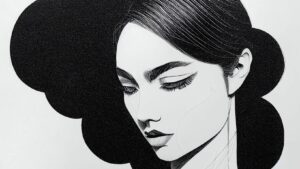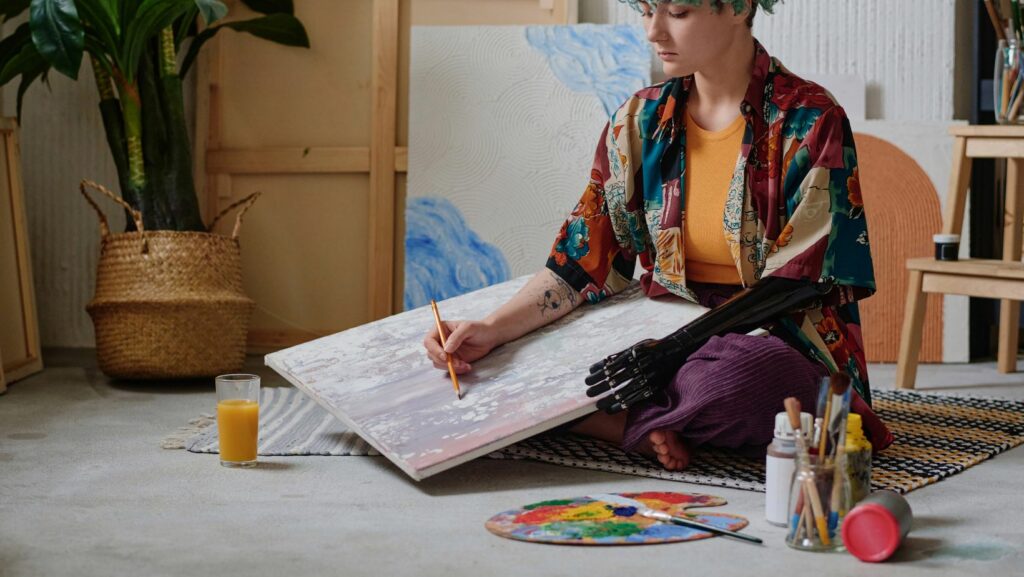Unlocking the power of creativity starts with a single stroke, a tiny dot, or a simple line. For a young girl, drawing isn’t just an activity—it’s a journey of self-expression, a path to understanding her world. This article delves into the fascinating universe of girl drawing, exploring its implications for cognitive development, emotional well-being, and self-esteem. From doodling in the margins of a notebook to creating intricate works of art, we’ll examine how drawing shapes a girl’s perspective and molds her identity.
Girl:o9aveqjnvau= Drawing

Girl drawings captivate audiences worldwide, gaining remarkable recognition in various artistic circles. According to the 2018 Arts Education Partnership report, a surge in participation was observed, especially among girls aged 5 to 14. This popularity reflects an increasing acceptance and appreciation of girls’ self-expression via art.
The appeal stems from the authentic, unique perspective that each drawing presents. Through these drawings, observers gain insight into the creativity, experiences, and world views of young girls. Girl drawings delve into diverse themes, depicting everything from whimsical fantasy to poignant reflections of the world around them.
Technical proficiency also plays a significant role in their growing popularity. Even at young ages, girls demonstrate remarkable skill in mastering complex elements like perspective, shading, and composition. This ability to convey intricate details allows their art to captivate a broad audience.
Lastly, the rise of digital platforms amplifies this growing trend. Sites like Deviantart and Instagram serve as global galleries, showcasing the works of young, talented artists. Cumulatively, these factors underline the resounding popularity of girl drawings.
Different Styles and Techniques in Girl Drawings

Artistic expression varies, and girl drawings are no exception. Three common styles dominate: a realistic style, a semi-realistic style, and a cartoon or stylized style. Each caters to a different aesthetic, showcasing a wide range of skills. The realistic style reflects an artist’s ability to capture every detail meticulously. Semi-realistic, on the other hand, blends realism with creative flair while the cartoon style is more playful, boasting exaggerated features and bold colors.
Also, different techniques come into play, such as stippling, hatching, and cross-hatching for those working with pens or pencils. Meanwhile, those preferring digital mediums might explore techniques like layering, shading gradients, and using texture brushes for depth. Others might incorporate watercolor for a softer look or acrylics for vibrant, bold strokes. Ultimately, choice of style and technique depends on an artist’s individual preferences and creative vision.
Famous Artists Known for Girl Drawings
Diverse artists have gained acclaim for their exceptional girl drawings, each showcasing a unique style and technique. These artistic perspectives resonate across globes, garnering significant attention on social platforms. Firstly, Audrey Kawasaki, renowned for her ethereal, feminine illustrations that blend traditional Japanese aesthetics with Art Nouveau influences. Secondly, Christina Papagianni, she’s revered for her hyper-realistic portraits, capturing profound emotion in her subjects.

Also noteworthy are Melanie De Biasio and Ruth Speer, who use digital platforms to amplify their distinctive artwork—De Biasio’s bold, surrealistic first nations girls, and Speer’s soft, warm-toned portraits.
Lastly, Osamu Tezuka, the godfather of Manga, whose iconic girl drawings significantly influenced the Anime style. Each artist mirrors their creative vision through their choice of style and technique, contributing to the rich tapestry of girl drawings.
The Role of Girl Drawings in Modern Media
The impact of girl drawings is far-reaching, influencing not only the artist’s personal growth but also shaping the broader art landscape. With the advent of digital platforms, this art form has found a global stage, allowing for the sharing and appreciation of diverse styles and techniques. The choice of style and technique is no longer a mere personal preference; it’s a powerful tool for expressing individuality and creative vision.
Artists like Audrey Kawasaki, Christina Papagianni, Melanie De Biasio, Ruth Speer, and Osamu Tezuka have left indelible marks in this field, showcasing the limitless potential of girl drawings. Their unique styles and techniques have inspired countless young artists, fostering a vibrant and dynamic community of creatives.
As we continue to witness the evolution of girl drawings, it’s clear this art form holds a pivotal role in modern media, and its influence is set to grow even more in the years to come.



